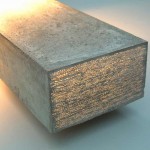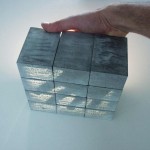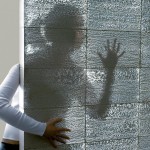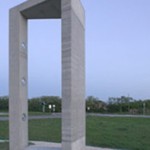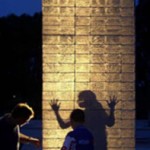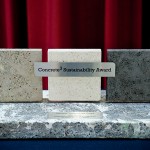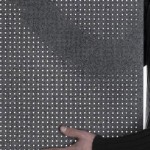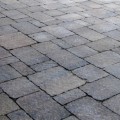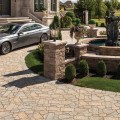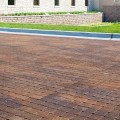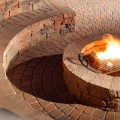
New Concrete Transmits Light
With approximately 10 billion tons produced each year, concrete is the world’s most used building material. In fact, the weight of concrete used each year across the globe is twice that of steel, wood, plastics, and aluminum combined. Lime mortars were used in Crete, Greece, and Cyprus as early as 800 BC. Concrete floors were found in the royal palace of Tiryns, Greece, which roughly date to 1400-1200 BC. The Romans used concrete extensively for over 700 years beginning around 300 BC. The advent of concrete sparked the Roman Architectural Revolution and allowed Roman architects to create designs revolutionary in both their complexity and scale. During these times, it was already discovered that adding volcanic ash to the concrete mixture allowed it to set underwater. Romans also understood that concrete, with horse hair as an additive, was less likely to crack while hardening, and that adding blood to the mixture made the material more resistant to frost.
British engineer, John Smeaton, pioneered the use of hydraulic lime in concrete for use in constructing the third Eddystone Lighthouse in Devon, England. This may be the greatest driver behind the modern usage of concrete. A method for producing Portland cement was patented by Joseph Aspdin in 1824, and Joseph Monier invented reinforced concrete in 1849.
In 2001, a new additive found its way into concrete: optical fibers. The material, named LiTraCon (short for “light-transmitting concrete”), was developed in 2001 by Hungarian architect Áron Losonczi and scientists at the Technical University of Budapest. A technical data sheet from the manufacturer states the meterial is composed of 96% concrete and 4% optical fibers by weight. Because of the embedded optical fibers, LiTraCon has the unique ability to transmit light through the stone from one end to the other. Silhouettes cast on one side of the stone are visible from the opposing side. Because so little light is lost as it passes through the structure, light can be transmitted through a few meters of the stone without losing its original color. While the cost is still high (it could cost about five times as much to build using transparent concrete as opposed to the traditional concrete), the compressive strength is comparable to that of high-strength concretes (over 10,000 PSI) and it possesses a tensile strength of 1,015 PSI without steel reinforcement.
In 2004, LiTraCon was used to create an interior sunshade in the Szilas-Brook home in Hungary. It was also used in the construction of the Europe Gate: a 3.5 square meter wall commemorating Hungary joining the European Union. In 2005, it was chosen as a material that may be used in the construction of New York’s Freedom Tower. In 2008, it was used in the Hungarian Embassy in Paris as well as the Iberville Parish Veterans Memorial in Baton Rouge, Louisiana. It won the Red Dot “Best of the Best” Design Award in 2005. More awards quickly followed.
- Europe Gate Without Backlight
- Europe Gate With Backlight
In 2009, Losonczi’s company, LiTraCon Bt., began using a circular plastic unit embedded within the concrete to produce the translucency effect without the more-difficult-to-install glass fibers. LiTraCon’s products are available in three colors: black, grey and white.
While LiTraCon is still quite expensive for those simply seeking the novelty of seeing light pass through a small block of concrete, the DIY community has experimented with making their own simple forms of light-transmitting concrete.
Click here to see how to make a simple version of light-transmitting concrete
Click here to check out a video of light-transmitting concrete

